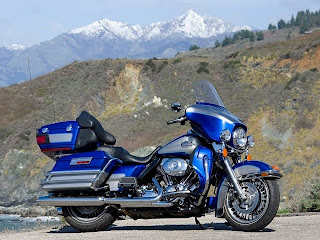Florida Federal Court Rules Manufacturers Have No Duty to Provide Bilingual Warnings
The United States has always been known as a “melting pot,” a place where people from all over the world come and settle and bring their food, culture, and language with them. What does this “melting pot” designation, however, mean for manufacturers, especially in a country where there is no official language? What duties do they have to people who do not speak or read English.
This was precisely the issue before the Southern District of Florida in the case of Farias v. Mr. Heater, Inc., et al., No. 09-CIV-23789, 2010 WL 4814660 (S.D. Fla. Nov. 19, 2010). On February 5, 2009, Plaintiff Lilybet Farias (“Plaintiff”), a naturalized American citizen who was Cuban-born, purchased two heaters from a Home Depot in Miami, Florida to heat her home during a cold snap. One heater was manufactured by Defendant Mr. Heater, Inc., and the other by Defendant Enerco Group, Inc. Plaintiff spoke little English and could read almost no English. Other than understanding the word “caution,” which was printed throughout the user’s manual, she could not understand any of the words on the heater’s packaging or read the users’ manuals.
Plaintiff took the two heaters home and hooked them up to propane tanks. She put one in her living room, two or three feet away from her sofa, and one in her bedroom. After watching television in her living room, she turned that heater off, turned on the heater in her bedroom and went to sleep. Later, she woke up when smoke from a fire in her living room woke her up. Her home suffered significant fire and smoke damage as a result.
Plaintiff filed suit against the two manufacturers of the heaters, as well as Home Depot. She sued the defendants on theories of negligent failure to warn and strict liability. The defendants filed for summary judgment. As the Southern District of Florida outlined:
A manufacturer must take reasonable precautions to avoid reasonably foreseeable injuries to the users of its products and thereby assumes a duty to convey to the users of that product a fair and adequate warning of the dangerous potentialities of the products so that the user, by the exercise of reasonable care, will have a fair and adequate notice of the possible consequences of the product’s use or misuse.
Nevertheless, Florida cases make clear that a manufacturer will not be held liable for damages in products liability cases, even if its warning is inaccurate, if the person did not read the warning or label, since in that case proximate cause cannot be established. As a result, the Court framed two issues before it: First, whether a manufacturer has a duty to provide warnings in Spanish, and second, whether a Spanish-speaking plaintiff can establish proximate cause when she cannot read English warnings provided by a manufacturer.
The Court held that, as a matter of law, the manufacturers of the heaters had no duty to provide bilingual warnings in this case. The Court distinguished the facts of Farias from a previous case, Stanley Industries, Inc. v. W.M. Barr & Co., Inc., 784 F. Supp. 1570 (S.D. Fla. 1992) in which the court imposed such a duty, because in Farias, the heaters at issue in the case were not marketed specifically to a Spanish-speaking population. The Court also noted that there was no statute imposing such a duty on manufacturers.
The Court also held that “any purchaser of the Heaters manufactured by Mr. Heater and Enerco who read the instructions would have understood the clear an unambiguous warnings not to sue the Heaters indoors in an enclosed space.” Relevant to the Court’s decision was the fact that Plaintiff had failed to further investigate the proper use of the heaters, despite her understanding of the word “caution.” She also understood the words “danger,” “warning,” and “stop.” In the words of the Court, “it would be improper to find such clear warnings inadequate because Plaintiff here was not well-versed in English and did not investigate the danger to which she had been alerted in the use of the Heaters.” In fact, the Court found that Plaintiff’s failure to seek out additional explanation was “willful ignorance . . . certainly akin — if not precisely the same — as refusing to read the warnings at all.” The Court granted summary judgment to the defendants on the cause of action for failure to warn.
Finally, the Court also held that the defendants were entitled to summary judgment on the strict liability cause of action because Plaintiff could not establish that either heater had been defectively designed.
The issue of bilingual warnings on consumer products will be an issue to watch in the future. This decision is an important one, because if manufacturers are required in the future to provide bilingual instructions and warnings, what languages are included? Spanish might be the obvious first step, but where would the line be drawn? If warnings are posted in Spanish and French, for instance, but the injured party is Korean, will the manufacturer be found negligent in a failure to warn case? Courts and legislatures need to be wary of imposing overly burdensome requirements on manufacturers in this area.

















